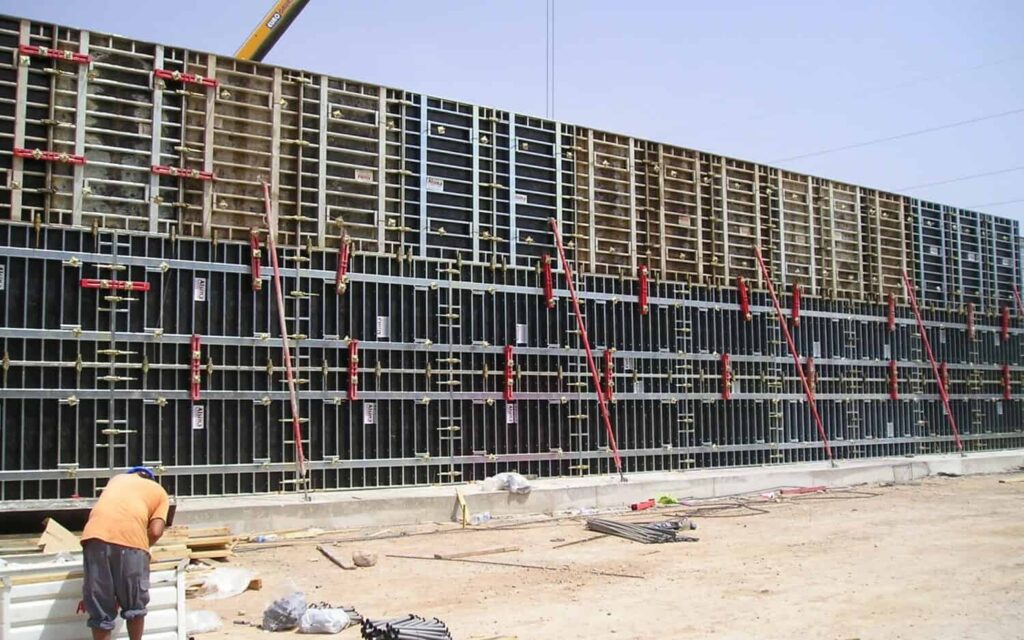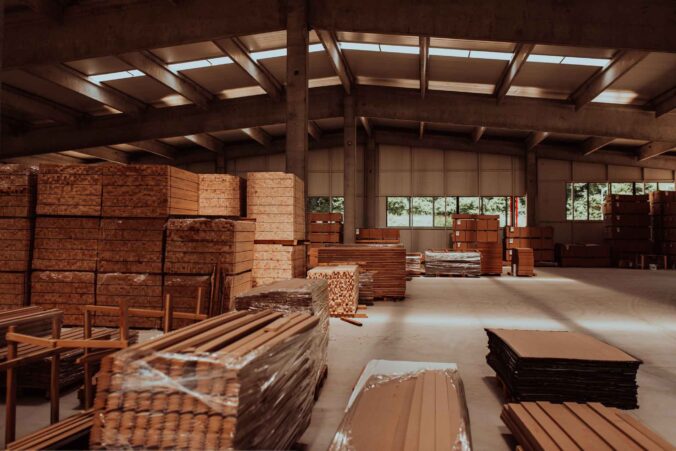In the world of construction, one material that plays a vital role is formwork plywood. This versatile and durable material is an essential tool for builders and contractors alike. Whether you are constructing a high-rise building or a simple residential structure, formwork plywood can greatly simplify the process and ensure superior results. In this comprehensive guide, we will explore everything you need to know about formwork plywood, from its definition and uses to the different types available and how to select the right one for your project. We will also provide invaluable tips on installation, maintenance, and care to help you make the most of this indispensable construction tool.
Understanding Formwork Plywood
Before delving into the specifics, it is essential to have a clear understanding of what formwork plywood is and how it is used in construction.
Formwork plywood, also known as shuttering plywood, is a type of engineered wood product that is specifically designed for use in concrete formwork applications. Its primary purpose is to provide support and shape to poured concrete until it sets and hardens. Formwork plywood is used to create temporary molds or formworks, allowing concrete to be poured into the desired shape and size.
Formwork plywood is widely used in various construction projects, including residential, commercial, and industrial applications. It is used to create concrete walls, foundations, columns, slabs, beams, and other structural elements. The versatility of formwork plywood makes it suitable for use in different types of construction, from small-scale projects to large-scale infrastructure development.

Benefits of Using Formwork Plywood in Construction
There are several benefits to using formwork plywood in construction:
- Strength and Durability: Formwork plywood is engineered to be strong and durable, capable of withstanding the pressure and weight of wet concrete. It provides stable support throughout the casting and curing process.
- Dimensional Stability: Formwork plywood is designed to resist warping and shrinking, ensuring that the concrete retains its desired shape and form.
- Easy to Work With: Formwork plywood is relatively lightweight and easy to handle, making it convenient for construction crews to transport, install, and remove.
- Reusable: Depending on the care and maintenance provided, formwork plywood can be reused for multiple projects, making it a cost-effective choice. Read more about Reusable at https://www.epa.gov/recycle/reducing-and-reusing-basics
The numerous benefits of formwork plywood make it an indispensable tool in the construction industry. Its versatility, strength, and durability contribute to efficient and high-quality construction projects.
Furthermore, formwork plywood is not only used for its functional properties but also for its aesthetic appeal. With advancements in technology, formwork plywood is now available in a variety of finishes, textures, and colors. This allows architects and designers to create visually striking concrete structures that blend seamlessly with their surroundings.
In addition to its aesthetic value, formwork plywood also offers environmental benefits. It is a sustainable material, as it is made from fast-growing trees that can be easily replenished. Moreover, formwork plywood can be recycled at the end of its lifespan, reducing waste and minimizing the environmental impact of construction projects.
Another advantage of formwork plywood is its versatility in adapting to different construction techniques. It can be easily cut, shaped, and formed to meet the specific requirements of each project. This flexibility allows contractors to create complex and intricate designs, pushing the boundaries of architectural possibilities.
Types of Formwork Plywood
Formwork plywood comes in various types, each with its own unique characteristics and advantages. Understanding the different types will help you choose the most suitable one for your specific construction needs.
Learn more at: Understanding the Benefits of Using Formwork Plywood in Construction
Softwood Plywood
Softwood plywood, as the name suggests, is made from softwood species such as pine, spruce, or fir. It is known for its excellent dimensional stability and structural strength. Softwood plywood is commonly used in residential construction, where cost-effectiveness and ease of use are key considerations.
Hardwood Plywood
Hardwood plywood is made from hardwood species, such as oak, birch, or maple. It is revered for its superior strength, durability, and resistance to warping. Hardwood plywood is often used in commercial and industrial construction projects that require higher load-bearing capacities and durability. To learn more about industrial construction click here.
Tropical Plywood
Tropical plywood is manufactured from tropical wood species, known for their exceptional resistance to moisture and decay. This type of plywood is primarily used in construction projects located in areas with high humidity or marine environments.
It is important to consider the specific requirements of your construction project and consult with professionals to determine the most suitable type of formwork plywood to use.
Marine Plywood
Marine plywood is a special type of plywood that is specifically designed to resist moisture, making it ideal for use in marine construction projects, boat building, and other applications where the wood will be exposed to water. It is constructed using waterproof adhesive and high-quality veneers, ensuring its durability in wet environments.
Film-Faced Plywood
Film-faced plywood is coated with a waterproof film on both sides, making it highly resistant to moisture, chemicals, and abrasion. This type of plywood is commonly used in concrete formwork, where a smooth and durable surface is required for multiple uses. The film also helps protect the plywood from the elements, extending its lifespan.
Selecting the Right Formwork Plywood
Choosing the right formwork plywood is crucial to ensure the success of your construction project. Several factors should be taken into account when making your selection.
Formwork plywood is a temporary mold into which concrete is poured to create a desired shape and structure. It plays a significant role in the construction process by providing support and containment for the concrete until it sets and hardens. The quality of the formwork plywood directly impacts the finish, strength, and durability of the concrete structure, making it essential to choose the right type for your project.
Factors to Consider When Choosing Formwork Plywood
When selecting formwork plywood, consider the following factors:
- Budget: Determine your budget limitations and choose a type of plywood that meets your financial constraints without compromising quality and durability.
- Project Requirements: Assess the specific requirements of your project, including load-bearing capacities, expected exposure to moisture, and location.
- Plywood Grades: Understand the different grades of plywood and select one that matches your project’s performance and aesthetic requirements.
- Manufacturer Reputation: Research and choose a reputable manufacturer known for producing high-quality formwork plywood.
Understanding Plywood Grades
Plywood grades are standardized classifications that indicate the quality and appearance standards of the plywood. The most common grading systems include A, B, C, and D, with A being the highest quality and D being the lowest. Each grade has specific characteristics and permissible defects. It is essential to familiarize yourself with the grading system and choose the most appropriate grade for your project.
Grade A plywood is free of any defects and is suitable for projects requiring a smooth and flawless finish, such as exposed concrete surfaces. Grade B plywood may have minor imperfections like knots and discoloration but is still of good quality and suitable for most construction applications. Grade C plywood allows for more defects and is commonly used for formwork where the appearance of the concrete is not a primary concern. Grade D plywood has the most imperfections and is typically used for temporary structures or where the plywood will not be visible after the concrete is poured.
Installation Tips for Formwork Plywood
Proper installation of formwork plywood is crucial to ensure the structural integrity and stability of the concrete construction. Here are some key tips to consider:
Preparing for Installation
Prior to installation, ensure that you have accurately measured and marked the areas where the formwork plywood will be installed. Clear the area of any debris, ensuring a clean and stable surface for installation.
When preparing for installation, it is important to take into account the environmental conditions. Extreme temperatures and humidity can affect the performance of the formwork plywood, so it’s essential to store the panels in a controlled environment before installation. This will help prevent any warping or swelling of the plywood, ensuring a smooth and even surface for the concrete.
Steps for Proper Installation
- Step 1: Align the Panels: Align the formwork plywood panels according to the layout and measurements. Ensure that the panels are securely connected, avoiding any gaps or misalignment.
- Step 2: Provide Support: Place adequate support, such as strongbacks, to prevent bulging or deformation of the formwork plywood under the weight of the concrete.
- Step 3: Secure the Panels: Use appropriate fasteners, such as screws or nails, to securely fix the formwork plywood panels in place.
- Step 4: Reinforce Joints: Reinforce the joints between the panels using fillet strips or bonding agents to prevent leakage of the concrete.
- Step 5: Apply Release Agent: Apply a release agent to the formwork plywood to facilitate easy removal after the concrete has set.
It is important to follow the manufacturer’s instructions and consult with professionals to ensure proper installation techniques and practices specific to your project. Additionally, it’s worth noting that regular inspections during the concrete pouring process are essential to identify any potential issues, such as bulging or misalignment, and address them promptly to maintain the quality and strength of the structure.
Remember, proper installation of formwork plywood not only ensures the success of your concrete construction but also contributes to the overall safety and longevity of the project. By following these tips and taking the necessary precautions, you can achieve a reliable and durable formwork system that will withstand the test of time.
Maintenance and Care for Formwork Plywood
Maintaining and caring for formwork plywood is essential to ensure its longevity and reusability. The following tips will help you keep your formwork plywood in optimal condition:

Cleaning and Storing Formwork Plywood
After each use, thoroughly clean the formwork plywood to remove any residual concrete, dirt, or debris. Use a high-pressure washer or appropriate cleaning solutions to ensure a clean surface. Once cleaned, store the formwork plywood in a dry and well-ventilated area to prevent moisture buildup and deterioration.
Extending the Lifespan of Your Formwork Plywood
To extend the lifespan of your formwork plywood, consider the following practices:
- Regular Inspections: Regularly inspect the formwork plywood for any signs of damage, such as cracks, warping, or decay. Address any issues promptly to prevent further deterioration.
- Proper Storage: Store the formwork plywood in a horizontal position, ensuring even distribution of weight and minimizing the risk of warping.
- Avoid Overexposure: Minimize prolonged exposure to direct sunlight or harsh weather conditions, as these can accelerate the deterioration of formwork plywood.
By following these maintenance and care tips, you can maximize the lifespan and usability of your formwork plywood, saving both time and money in the long run.
Conclusion
Formwork plywood is an indispensable tool in the construction industry, offering numerous benefits such as strength, durability, and ease of use. Understanding the different types of formwork plywood and selecting the right one for your project is crucial for achieving optimal results. Proper installation techniques, along with regular maintenance and care, will ensure the longevity and reusability of your formwork plywood. By following this essential guide, you will be well-equipped to utilize formwork plywood efficiently and effectively in your construction projects, while achieving superior quality and durability.
